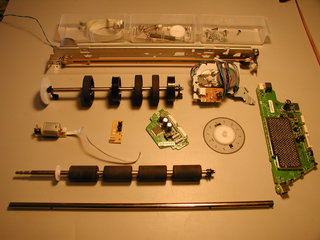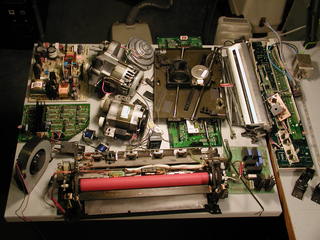Thoughts on a DIY Electro-Chemical CNC Machine Tool


There is a class of machine tool know as CNC, or Computer Numerically Controlled. These are computer controlled tools capable of cutting complex shapes with a high degree of accuracy and repeatability. They generally cost tens of thousand of dollars and weigh over a ton. They’re often available used for a few thousand dollars and I’d consider purchasing one for the workshop if I had the room for it.
There are also a large number of hobbyist kits for making small table top units with cutters based on Dremel tools and wood-working routers and there is an active community of people designing and building DIY machines, see Lab Links for resources.
I want to leverage these resources to build a CNC Electro-Chemical Machine tool. It will consist of a gantry that can move in 3 dimensions and hold a variety of "cutting" tools. Another key component is a electrolyte pumping and filtering system to prevent material build-up on the cathode "cutter".
Another type of tool, the Electrical Discharge Machine tool, is physically very similar to an ECM tool. However, with the EDM a high current discharge is used to melt tiny bits of material and the resultant collapsing vapor pocket in the fluid then blasts the molten metal from it’s pit. A circulation and filter system is also required, but a dielectric fluid is used rather then an electrolyte.
Both of these machines have the advantage that the cutting electrode or "tool" does not actually touch the work and thus, there is no side loading. This means that the machine tool does not require a huge chunk of cast iron to keep it rigid and repeatable. I plan to construct my machine with inter-changeable components so that I can experiment with both EDM and ECM modes.
I’ll use LinuxCNC.org’s EMC2 software to control the operation of the machine. EMC2 supports a variety of drivers, both stepper and servo, and appears to be the most popular of the OpenSource CNC projects.
First steps are playing with EMC2 and collecting hardware. I stripped an old Xerox copier and an HP inkjet printer this past weekend and, though they yielded many nice parts, none of the motors are approriate for this project. Suprisingly, the HP Inkject printer used servo motors with encoder wheels, I had expected it to use steppers. The Xerox copier, on the other hand, used simple AC motors and had no steppers either. It’s not a total loss as the HP servos will work fine as models for testing servo control electronics if I choose that motor technology.
This sounds interesting – did you build the ECM machine? If so, did you publish further work
http://steampunkworkshop.com/cnc-ecm-shtml/
Not yet! So many projects, so little time.